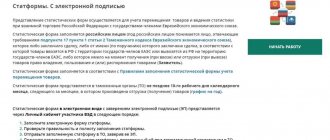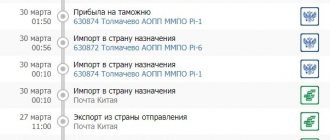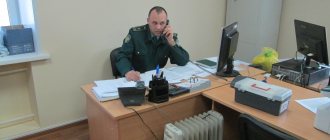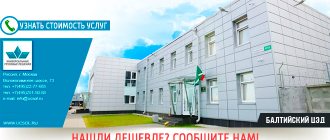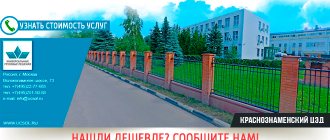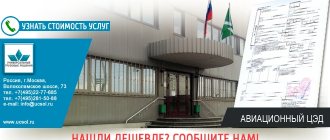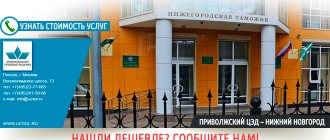It's no secret that interacting with officials and processing any documents is not a pleasant process, which is always difficult and troublesome. To free citizens from the need to obtain certificates from various government agencies, institutions operating on the “one-window” principle were established.
The “one window” regime has been used in other countries for a long time. For example, in Germany. There, an administrative reform was first carried out, during which the districts were expanded. Reception centers were opened in each district for citizens to apply and obtain the necessary certificates and permits. The need to knock on the thresholds of institutions was reduced to zero. Document flow is carried out electronically, payment for services is carried out through the bank.
A similar system was introduced in Russia. The beginning was made in the Moscow region. The Beskudnikovo district administration began to develop a new work scheme, using computer technology, serving individuals and legal entities. A particularly popular service was citizens’ requests for redevelopment of residential premises.
Currently, similar centers operate in almost all Russian regions.
System Features
MFCs are aimed at helping people receive various government services. What is the “one window” principle? It assumes that a citizen will apply to the institution once and receive a result over time. At the same time, all the necessary work will be done for him by employees of the MFC and other government agencies.
The convenience lies in the fact that when ordering a service, any citizen does not need to directly visit authorities, collect documents and contact officials. Such a system minimizes the moral, time, and material costs of consumers of public services. For this reason, MFCs are becoming increasingly popular.
“SINGLE WINDOW” PRINCIPLE AS A WAY TO IMPROVE CUSTOMS POST ACTIVITIES
№19, 07.06.2019
Economic Sciences
Ksalova Angela Alievna
Scientific supervisor: Yusupova S.Ya., Doctor of Economic Sciences, Professor
Key words: EFFECTIVENESS OF CUSTOMS ACTIVITIES; INFORMATION TECHNOLOGY; THE CUSTOMS POST; "SINGLE WINDOW"; EFFICIENCY OF CUSTOMS ACTIVITY; CUSTOMS POST; INFORMATION TECHNOLOGY; "SINGLE WINDOW" MECHANISM..
Abstract: The article discusses the issues of managing a customs post using information technology. The relevance of the study is substantiated, the features of various types of information technologies in the management of a customs post are identified. New directions for the development of customs post management based on information technology are considered.
Modern realities require the fullest possible implementation of information technologies in all areas of economic and public administration. This is a necessary factor for the development of productive forces in the country, improving the quality of life of the population, increasing the efficiency of business activities, etc. Thus, in the first Decree of the President of the Russian Federation after the inauguration “On national goals and strategic objectives of the development of the Russian Federation for the period until 2024” [1], “ensuring the accelerated implementation of digital technologies in the economy and social sphere” is noted as one of the primary goals. To implement it, it is necessary to solve the problem of introducing digital technologies and platform solutions at all levels of interaction between government bodies, the population and small and medium-sized businesses, including individual entrepreneurs.
Russian customs authorities also regard the use of information technology in their area of activity as a primary task for improving customs processes and operations as part of the reforms carried out by the Federal Customs Service of the Russian Federation.
For this purpose, in recent years, “single window” technologies, “electronic declaration”, risk management systems, new forms of electronic payments, etc. have been actively and consistently introduced into the activities of Russian customs.
The “single window” principle is implemented by ensuring a one-time submission to the customs authority by the carrier, or a person acting on his behalf, of documents and information necessary for the implementation of customs and other types of state control (supervision), and informing the customs authorities on the results of such control ( supervision) about decisions made.
Such a system allows us to significantly reduce the time of customs processing of goods, relieve all parties from unnecessary, sometimes duplicating, actions, and increase the reliability and efficiency of customs posts on a global scale.
Thus, today, throughout the world community, more than 30 countries have successfully implemented and are using the Single Window mechanism, while receiving significant benefits due to the reduction of administrative barriers and resources associated with the preparation, presentation and processing of the required official information. [2]
The EAEU Customs Code, along with the priority development of electronic customs declaration, also emphasizes the need for the speedy implementation of the “single window” principle in the work of customs posts on the territory of all participating countries.
So, paragraph 2 of Art. 80 of the Customs Code of the EAEU contains a provision that documents necessary for carrying out customs operations may not be presented to the customs authority when they are carried out, if information about such documents and information from them can be obtained by customs authorities from information systems used by customs authorities, and also from information systems of government bodies, organizations of Member States within the framework of information interaction.
It is obvious that improving the activities of a customs post based on the “single window” system cannot be effectively implemented without the parallel introduction of electronic document management. For example, participants in foreign economic activity in Russia actively use guarantees issued electronically using electronic signatures during customs transit of goods as security for the payment of customs duties and taxes. The number of such guarantees received by customs authorities reaches half a million per year.
Within the framework of the “single window” system, customs payments and fees are also carried out electronically, carried out using special terminals and online payment systems. The obvious advantage of this technology is that radiological, environmental, sanitary and epidemiological control as such is no longer carried out directly during the customs clearance process; before electronic declaration, this represented a big problem both for the customs post itself, where the cargo was stuck for a long time, and for entrepreneurs who did not could receive one or another certificate.
Thus, the costs of all participants in foreign economic activity are noticeably reduced, and the work of customs post specialists is reduced to inspection, registration, determining the form of customs control, working with online databases and reference materials.
The Single Window system requires the customs post to switch to cloud technologies, centralize functionality and reduce overhead costs for maintaining the device on site.
Already today, customs posts can process a declaration in 30 minutes, but this time can be halved, says First Deputy Head of the Federal Customs Service (FCS) Ruslan Davydov. [4]
For Russia, the main problem is automobile checkpoints. We have 172 of them due to the long length of the state border. Naturally, putting them all in order requires enormous investments. For example, the port of Rotterdam in the Netherlands, 39 billion euros were allocated to the development of its infrastructure over five years. Now only robots work there under the guidance of two port employees. One section of it processes more than the entire port of St. Petersburg. The national project “International Cooperation and Export” [2] provides that by 2024, 24 export-oriented checkpoints will be modernized. This will help to process cargo faster, primarily for small exporting enterprises.
First of all, it is necessary to improve the infrastructure of those customs posts that are located along the main transport corridors: the Silk Road belt, the North-South corridor, in the Far East, since on the Chinese side they are well equipped, but on ours - not completely. Davydov R. also notes that the Zabaikalsk and Kyakhta checkpoints in Buryatia also require attention. In the south of the country, it is necessary to modernize Yarag-Kazmalyar on the border with Azerbaijan, and Upper Lars on the border with Georgia. In the latter, by the way, the flow of trucks is five to six times higher than the design capacity.[4]
It is necessary - this is not only the implementation of best international experience, but also an important anti-corruption step in the work of customs as an integral and effective system. This approach allows us to minimize the human factor and organize the necessary monitoring procedures that help quickly resolve problematic issues. The “single window” mechanism allows all government bodies that provide control over the movement of goods in the customs territory to work in a single complex. Such a system encourages regulatory authorities to transition to a modern global approach to customs control. After all, this is an open and transparent implementation of customs formalities and other types of control without “manual” intervention in these processes. Under such conditions, any abuse cannot go unnoticed.
We can safely call the widespread launch of the “single window” a big step in the evolution of customs business. Already today, about 80% of businesses enjoy the benefits of this simplified system. And every day more and more users experience the benefits of this customs clearance mechanism. The “single window” is becoming the main way for enterprises to communicate with regulatory authorities.
System advantages
The “one-stop shop” system implemented in the established centers is the result of public administration reform. This is an innovation aimed at making life easier for ordinary citizens and businessmen.
The work of the MFC is aimed at:
- reducing the duration of provision of public services;
- reducing the queue;
- increasing citizen satisfaction from communications with governing bodies.
The centers simplify the procedures for processing documents, combine the work of various departments, provide comfort to applicants when applying, and reduce the cost of time and money.
At the centers, documents are received not by civil servants, but by front office specialists who deal with requests for services from any department. The decision to provide the service is made, as before, by the state body. But the applicant does not contact the official; the office employee does this for him. The specialist contacts officials at different levels, which significantly increases the applicant’s comfort and also prevents corruption.
Legislative framework
The implementation of the “one window” principle and interaction with the MFC of citizens and government agencies is regulated by law.
In 2010, a Federal Law was issued regulating the activities of the MFC. It states:
- Nuances of providing municipal services.
- List of services for which you can contact institutions.
- Legal potential and responsibility of the MFC.
- Obligations of other government agencies to the MFC.
The MFC can have any form of organization, which must comply with the rules of the law and implement the main idea - the “one-stop shop” principle.
In 2012, a government decree was issued, which sets out the requirements for the activities of the MFC, as well as for the material and technical equipment of the institution, for the information technologies used, and for contacts with other government agencies. The number of windows, the area of the establishment, zoning, work schedule, and location were determined.
The 2011 Decree regulates the interaction of the MFC with authorities, local self-government, extra-budgetary funds and determines the list of issues in this activity, as well as the list of services provided by the MFC.
One Window System for Exporters
The “One Window” information system, with the help of which Russian exporters will receive online access to services accompanying the conduct of foreign economic activity (FEA), moves from a test to a full-fledged format of work from November 26, 2021. The corresponding order was signed by Prime Minister Mikhail Mishustin . The document was published on the Government website.
“Today, exporters are forced to contact about 20 departments, filling out and receiving about 70 different forms of documents,” said Alexey Mikhailik , IT director of the Russian Export Center (REC), which acts as the operator of the project in the field of foreign trade. He also pointed out that the time frame for receiving documents varies markedly: in some places papers are issued in a few days, and in others in months. The “One Window” system digitally presents the services needed by the exporting company to solve the main business problems at each stage of the export cycle. To interact with various departments, the exporter will only need to enter the necessary data into the system once, and then receive the necessary services.
At the first stage, six services will be launched. Businesses will be able to issue support measures, customs declarations and receive a service to confirm the zero VAT rate. Later, companies will be able to remotely issue permits and receive other services in accordance with the list determined by the Government in July 2021.
Mikhail Mishustin signed documents on the launch of a “one window” system for foreign trade participants
The initial version of the list included 24 services, including services related to analytics, as well as electronic storage of certificates and licenses. A new order of the Government has added four services: obtaining permission to process goods in the customs territory, facilitating the activities of small and medium-sized businesses on electronic trading platforms, obtaining a preliminary decision on the classification of goods in accordance with the unified commodity nomenclature of foreign trade activities of the Eurasian Economic Union, providing subsidies from the federal budget to compensate for part of the costs associated with certification and homologation (standardization) of products in foreign markets. In total, 28 services should be operational in the system in the future.
The “One Window” system, as indicated in the message on the website, will free exporters from numerous paper document flows and establish electronic communication with various government departments and organizations involved in the provision of services in the export sector.
The creation of the resource is provided for by the national project “International Cooperation and Export”, the resource contributes to achieving the goal of ensuring an increase in the total export of non-resource non-energy goods by 70% by 2030.
Activity guidelines
Centers operating on the “one window” principle perform the following functions:
- accept requests from citizens for the provision of public services;
- represent the interests of citizens in various government bodies and structures;
- reflect the interests of government agencies when communicating with applicants;
- inform applicants about the procedure for providing services and advise on other issues related to public services;
- contact with government agencies on issues of serving citizens;
- issue consumers with the necessary documents as a result of the provision of services;
- receive and process information from government agencies and issue documents based on it.
The “one-window” principle is applied in the scheme of providing services in a single place. Thus, the MFC is the organizer in the process of organizing services of state and municipal structures.
The EAEU has begun to develop a mechanism for the exchange of electronic permitting documents
MOSCOW, January 15. /TASS/. The countries of the Eurasian Economic Union (EAEU) have begun to implement a mechanism for cross-border exchange of electronic permitting documents, which should simplify customs operations. The press service of the Eurasian Economic Commission (EEC) reported this on Wednesday.
“The EEC Board approved documents regulating information interaction in the implementation of the general process using the Union’s integrated information system, the use of databases of documents drawn up by the authorized bodies of the EAEU member states, in regulating foreign and mutual trade, including those presented during customs operations to confirm compliance with prohibitions and restrictions,” the EEC press service said in a statement following the meeting of the Board held on Tuesday.
The implementation of the general process will make it possible to establish cross-border information interaction between the customs and regulatory authorities of the EAEU countries in the matter of obtaining information about the documents necessary to carry out customs operations, as well as create the basis for the development of the “single window” mechanism. “In essence, we are talking about the beginning of the implementation of a mechanism for cross-border exchange of electronic permitting documents,” the press service added.
The implementation of the general process will take place in stages as the composition and structure of the information presented from documents in electronic form is regulated in EAEU law. The Order of the Board established a nine-month period during which the transition to cross-border electronic exchange of information from documents assessing compliance with the requirements of the technical regulations of the EAEU or the Unified Sanitary-Epidemiological and Hygienic Requirements for products subject to sanitary-epidemiological supervision (control) must be made.
The Board also approved changes regarding the customs declaration of express cargo delivered by express carriers as goods for personal use. It is expected that these innovations will simplify the procedure for declaring this category of goods.
At the meeting, the structure and format of the certificate for ensuring the fulfillment of the obligation to pay customs duties and taxes was also determined, which will make it possible to move on to the development of a unified electronic document flow between customs authorities and participants in foreign economic activity of the Union countries. This certificate in the form of an electronic document is an integral part of the unified system of customs transit of goods in the EAEU. The EAEU includes Russia, Armenia, Belarus, Kazakhstan and Kyrgyzstan.
Realizable idea
The idea behind the centers formed throughout the country is that people request different documents at different points in their lives. The most common situations:
- registration of the first passport;
- Marriage registration;
- birth of children;
- opening your own business.
In these cases, it is very important to complete all the necessary documents as soon as possible and return to performing basic life tasks. The “one window” technology contributes to this.
The MFC becomes a person’s life partner, helping to obtain documents at different periods of life as simply and quickly as possible, eliminating possible difficulties.
The regulatory framework for organizing this system is constantly being improved. The final goal is that a person does not need to go to different authorities to collect papers, but only need to contact the Multifunctional Center and use the necessary services. Therefore, regulations are constantly changing, and the list of services provided at the MFC is expanding.
Bibliography
- Decree of the President of the Russian Federation dated 05/07/2018 N 204 (as amended on 07/19/2018) “On national goals and strategic objectives of the development of the Russian Federation for the period until 2024” // Collection of Legislation of the Russian Federation, 05/14/2018, N 20, Art. 2817.
- “Passport of the national project (program) “International Cooperation and Export” (approved by the Presidium of the Council under the President of the Russian Federation for Strategic Development and National Projects, protocol dated December 24, 2018 N 16) // The document was not published
- Shokhin S.O. Electronic customs - today and tomorrow (legal aspects) // Customs business. 2021. N 3. P. 16 - 19.
- https://www.tks.ru/reviews/2018/11/06/02
Service list
Today, MFC provides services in the following situations:
- the appearance of children;
- change of surname;
- retirement process;
- housing construction;
- loss of documents;
- starting your own business;
- change of place of residence;
- loss of relatives;
- buying a home.
A complete list of municipal ones can be found in the MFC itself. In total, the centers serve the population with 131 services. Of these, 36 are federal, 43 are municipal and 52 are other.
The multifunctional center helps in obtaining Russian and foreign passports, in obtaining extracts from the cadastre, in accepting documents for registration of marriage and divorce, for regular child benefits, obtaining a hunter's ticket, for issuing subsidies, in obtaining extracts from the archive, in registering children with preschool institutions.
Brand name and values
The government has instructed to create a single brand for all MFCs in Russia.
In 2014, MFCs received a new name - “My Documents”. New centers are created under this name, and existing ones are undergoing a rebranding process. Rebranding is carried out with the slogan “For all occasions”.
The MFC brand values are:
- attentiveness to people and their life situations;
- friendly service;
- convenient service;
- comfort in interaction;
- close placement of centers;
- accessibility of public services to any citizen.
The relationship between government agencies is regulated by decrees and regulations.
According to statistics, as of January 2021, the percentage of the population covered by the MFC was more than 94%.
Algorithm for contacting the MFC
How to interact with the multifunctional center?
Procedure:
- Call and ask if applications for a specific service are accepted. The center specialist will advise you on what documents are needed.
- A citizen contacts the center to fill out an application.
- If it is necessary to pay a state fee, it is paid at the center terminal.
- The applicant appears within the prescribed period to receive the result.
Ideally, a citizen should apply only twice – when submitting an application and when receiving the result. This is how the “one window” principle is implemented in the MFC.
Problems and prospects for the development of the “single window” mechanism within the framework of the Eurasian Economic Union
|
Downloads: 47 | Citations: 1 More publications on this topic:
Possibilities for expanding the freedom of movement of goods in the context of integration of the EAEU countries
(
Vartanova M.L., Drobot E.V.
) // Economic relations. No. 2 / 2019
The state of the world economic system from the perspective of the theory of long-wave development
(
Popov A.K.
) // Issues of innovative economics. No. 4 / 2021
Household transfers: essence, typology, factors of their formation
(
Kalashnikova I.V., Mironenko O.V.
) // Labor Economics. No. 1 / 2014
Reasons for the hybrid war of the West against Russia and its leading instruments
(
Kapkanshchikov S.G., Kapkanshchikova S.V.
) // Economic security. No. 2 / 2020
Software business bubble. What to do?
(
Fokin G.V.
) // Issues of innovative economics. No. 9 / 2011
Journal article
Economic relations
Volume 5, Number 2 (April-June 2015)
Quote: Repin D.V., Samik M.V. Problems and prospects for the development of the “single window” mechanism within the framework of the Eurasian Economic Union // Economic relations. – 2015. – Volume 5. – No. 2. – P. 12-15.
This article is indexed by the RSCI, see https://elibrary.ru/item.asp?id=29289270 Citations: as of 03/10/2020
Abstract: The article examines the “Single Window” mechanism being introduced into the work of customs authorities, and highlights the problems and prospects for using this mechanism within the framework of the Eurasian Economic Union.
Key words: foreign economic activity, single window, import-export operations, electronic format
Similar articles:
Approaches to creating a “single window” mechanism in the European Union
(
Bondarenko A.V., Petrova S.O.
) // Issues of innovative economics. No. 2 / 2017
Organization and legal regulation of a “single window” for foreign trade in foreign countries
(
Gambeeva Yu.N., Glamazda A.V.
) // Economics, entrepreneurship and law. No. 3 / 2019
Sources:
1. Recommendation No. 33 of the United Nations Center for Trade Facilitation and Electronic Business [Electronic. resource]. Access mode: World Wide Web. URL: https://www.tsouz.ru/db/it/conf/Documents/UNECEdocs/Rec33_2005%20.pdf 2. Decision 249 of the Board of the Eurasian Economic Commission dated December 24, 2014 “On the action plan for the implementation of the Main Directions for the Development of the Mechanism” single window" in the system of regulation of foreign economic activity" [Electron. resource]. Access mode: World Wide Web. URL: https://www.eurasiancommission.org/ru/nae/events/Pages/24-12-2014.aspx 3. Rossiyskaya Gazeta. [Electron. resource]. Access mode: World Wide Web. URL: https://pda.tks.ru/news/nearby/2015/03/31/0003
More about the authors:
Repin Denis Vladimirovich Vyborg branch of the Russian Academy of National Economy and Public Administration under the President of the Russian Federation
Samik Margarita Vasilievna
Vyborg branch of the Russian Academy of National Economy and Public Administration under the President of the Russian Federation
Return to top
See also:
Prospects for the implementation of the concept of a single financial market of the Eurasian Economic Union
(
Morozov S.A.
) // Economic relations. No. 4 / 2020
Single market for services within the framework of the implementation of the Treaty on the Eurasian Economic Union: opportunities and disadvantages
(
Vartanova M.L.
) // Economic relations. No. 1 / 2019
Models of citizen engagement platforms for creating a new generation of “smart cities” in Russia
(
Mukhametov D.R.
) // Issues of innovative economics. № 3 / 2020
Software business bubble. What to do?
(
Fokin G.V.
) // Issues of innovative economics. No. 9 / 2011
Reasons for the hybrid war of the West against Russia and its leading instruments
(
Kapkanshchikov S.G., Kapkanshchikova S.V.
) // Economic security. No. 2 / 2020
Page updated: 12/11/2021 at 12:43:51

